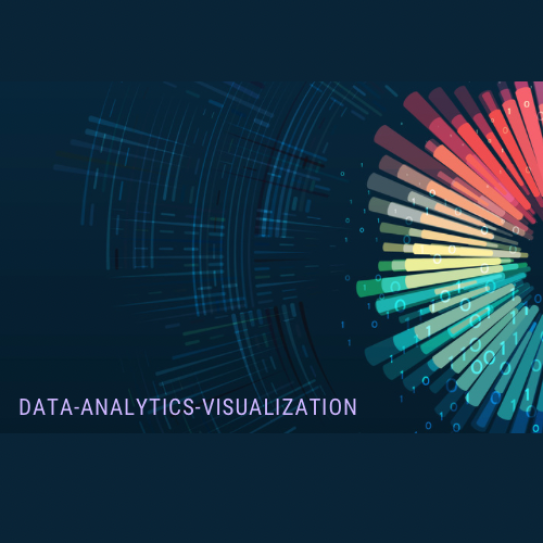Data-Analytics-Visualization
-
Aligning data, analytics, and visualizations for real world results.

Data is essential to the success of nearly every project or initiative, but developing the necessary skills and gaining the relevant experience can be difficult to do in today's workplace.
The objective of this project is to provide students with an opportunity to bridge the gap between knowledge/theory and application/experience. Students will gain experience working with real data sets to develop data driven solutions that solve challenges faced by businesses, organizations, and government agencies and both the technical and business skills for succeeding in future professional and entrepreneurial pursuits, such as managing complex technology projects, developing data driven products and leading technical teams.
Goals:
The goal of this project is not to produce research or publish results. Students are expected think critically about the constraints, challenges, and limitations of implementing a proposed solution and utilize data to identify potential approaches to address problems in the real world. Students will gain hands on experience utilizing data, analytics, and visualization as well as learn/develop their technical skills and business acumen.
In the spirit of the program, every member is expected to challenge their abilities and contribute new work each semester. Students who join the team for more than one semester will be expected to produce a new workplan at the start of each semester and will have the opportunity to work on new projects, focus on a different aspect of work done during previous semester and/or collaborate with a different sub-team. Alternatively, returning students can choose to continue their work from the previous semester and take on additional responsibilities, such as mentoring new members.
Every member is responsible for communicating with the team as issues arise, managing their technical contribution, sharing their work with both internal and external audiences, and reflecting on their experience to provide feedback at the end of the term.
Students will submit a report explaining their contribution to the team, produce technical documentation of the work completed, and share their work with an external audience, e.g. writing a blog post, at the end of each semester.
Interested in Supporting Data-Analytics-Visualization?
Email Jennifer Shin, jennshin@nyu.edu
Your financial support will help pay for project operational costs, learning opportunities for students (such as online courses and conference expenses) and data access.
Research, Design or Technical Issues Involved or Addressed:
The project focuses on aligning data, analytics, and visualization to design, develop and implement solutions for the real world. Students will gain hands on experience working with real data sets on projects ranging from data cleaning, data processing, application development, open source management, and solution design.
Students will use a combination of critical thinking, problem solving and technical skills to develop solutions that can be implemented in the field.
Project tasks include, but are not limited to:
● Utilizing data, models/metrics, and visualization techniques to explore, analyze, integrate, and implement new and existing data sources
● Creating, developing, and assessing new visualization techniques, tools, and technologies
● Determining best practices for processing and representing data and utilizing data visualization techniques and technologies
● Tailor visualizations with specific audiences, industries, or channels
● Launching and managing a citizen science or open source project
While coding experience is not a requirement, all students are required to work on developing their technical skills and ideally contribute technical work during the semester. Students will be responsible for managing their workload, documenting their progress, and communicating with both team and sub-team members in a reasonable amount of time.
Subteams:
Students will have the opportunity to pitch what they would like to focus on during the semester and collaborate with other students as part of a subteam. Sub-teams will be determined at the start of each semester based on the interests and goals of the team as well as new/existing collaborative agreements and partnership opportunities.
Methods and Technologies
- Vary based on tasks and objectives for a given semester, but may include:
- Data analysis (eg Excel, R, etc)
- Data/Code management (e.g. Github, SQL, MongoDB, Elasticsearch, etc)
- Data modeling (e.g. R, python, etc)
- Data science (e.g. regression, classification, tensor flow, etc)
- Data processing (e.g. Azure, Google Cloud Platform, etc)
- Data engineering (e.g. Python, CLI, etc)
- Data visualization (e.g. powerbi, tableau, google data studio)
- Application development (e.g. html, css, netlify, Heroku, etc)
- Project Communication (Slack, Zoom)
Majors and Areas of Interest
- All majors are welcome, but students with limited technical knowledge or experience must be committed to learning how to contribute to a technical team.
- Analytics
- Data Visualization
- Data Engineering
- Data Science
- Machine Learning
- Artificial Intelligence
- Product Management
- Mathematical Modeling
- Statistics & Data Analysis
- Code Management / Implementation
- Citizen Science / Crowdsourcing / Open Source Development
- User Interface Design
- Entrepreneurship (e.g. start up creation)
- Enterprise software development (e.g. SDLC )
- Application Development (e.g. Agile)
- Business process & operations
- Implementation (i.e. in production)
- Technology strategy (e.g. alpha/beta development, product launch)
- Business strategy (e.g. go to market (GTM), establishing/managing partnership, etc)
Primary Instructors
- Jennifer Shin (NYU Stern, Adjunct Professor)
- Email: jennshin@nyu.edu

